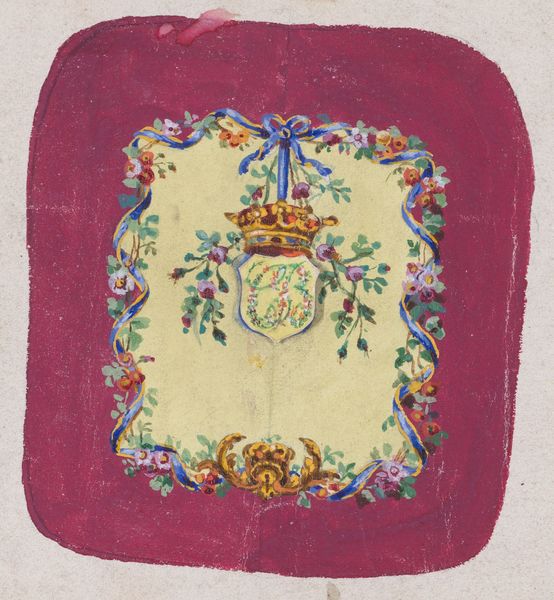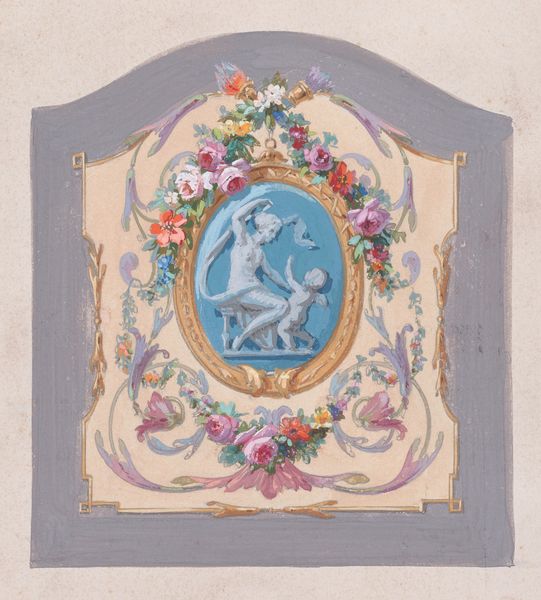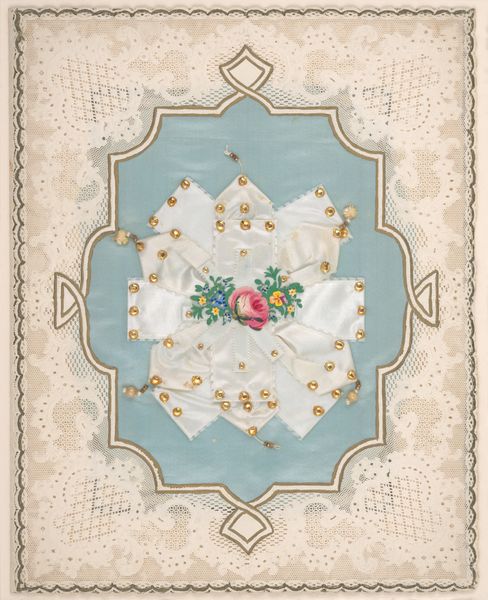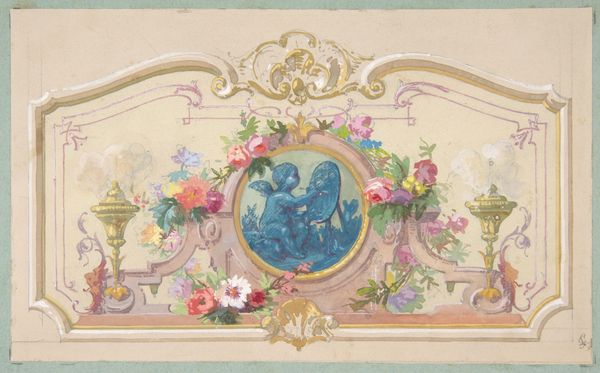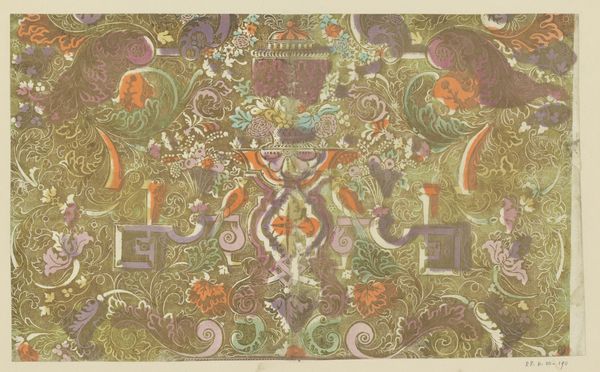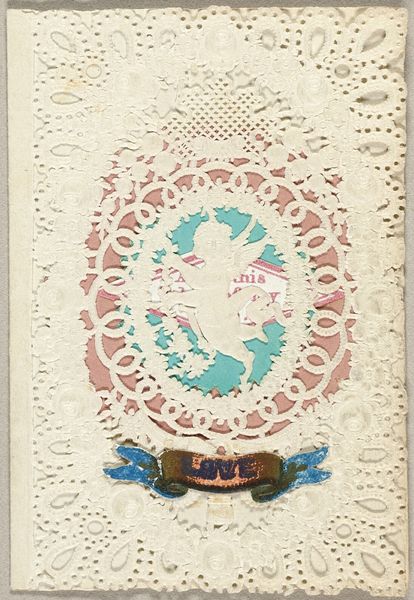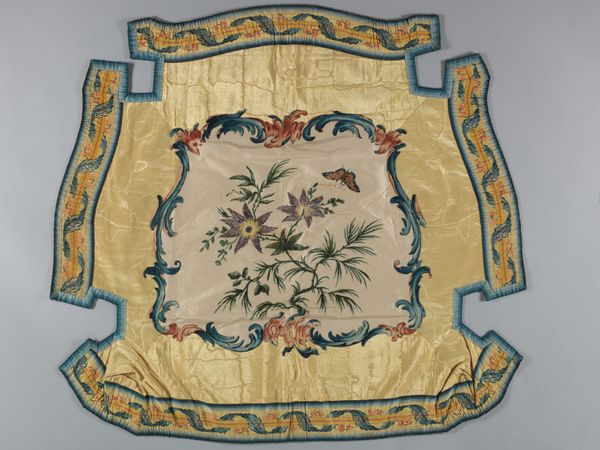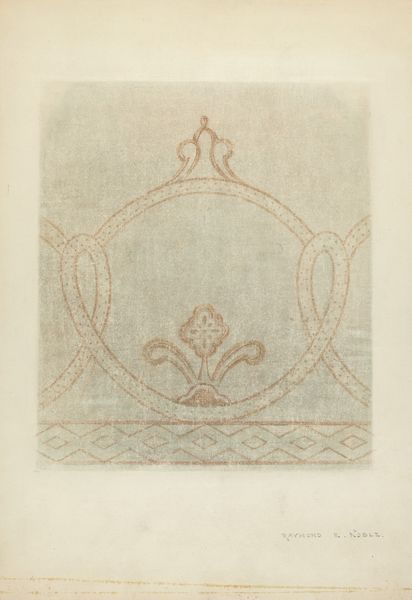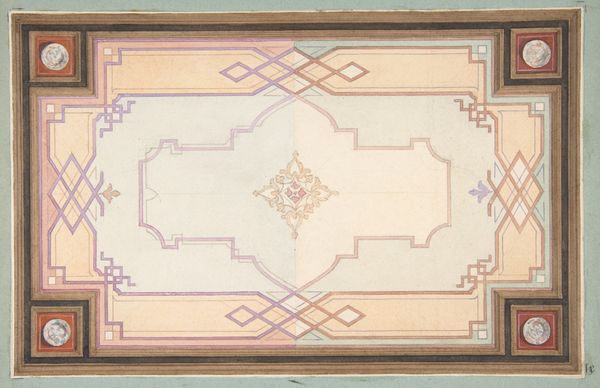
Design for a Chair Seat Cover with an Ornamental Frame with Two Restling Putti with Hanging Garlands of Leaves and Flowers Inside a Larger Ornamental Frame Featuring a Heart-Shape Motif 1870 - 1900
0:00
0:00
Dimensions: Sheet: 15 1/16 × 9 7/16 in. (38.3 × 24 cm)
Copyright: Public Domain
Curator: Here we have a design for a chair seat cover from around 1870 to 1900. It is by an anonymous artist. It is currently residing here at the Metropolitan Museum of Art. Editor: Oh, it's lovely! Very dainty. All those pastel watercolours. A bit too saccharine for my taste, but the detail is remarkable. So intricate. Curator: Indeed. Note the layers of ornamental frames—one enclosing a pair of wrestling putti surrounded by garlands of flowers and leaves, and another, larger frame featuring a heart motif. The proliferation of decorative elements tells us a lot about the tastes of the time. These intricate designs speak to the industrial revolution's effect on the rise of decorative arts, as the aspiration toward the luxurious became increasingly democratized through industrial processes of production. Editor: So it is aspirational work—not something made for the elite, but something for a more widespread emerging middle class perhaps, aiming for a kind of domestic fantasy? And look at the materials, it’s not some grand oil painting; it's watercolour, more easily accessible, reproducible, pointing to a shift in artistic production toward commercial application. This chair wasn’t just to be sat on, it was supposed to make a statement about who the owner was. Curator: Precisely. The style evokes romanticism, appealing to sentimental values prevalent in that era. The putti, or cherubic figures, traditionally symbolize love and innocence. This was also a time of elaborate upholstery and interior design, reflecting Victorian sensibilities around comfort and display of domestic space. The market was burgeoning for affordable yet fashionable home furnishings. Editor: And all of it done in miniature. Someone labored extensively, I bet. Can we truly divorce the visual delight of something like this from understanding how the creation and ownership reinforced new social dynamics, and labor conditions were transforming because of industry? Curator: Absolutely. It prompts us to think about how notions of beauty, love, and home were actively shaped and marketed. I see this not merely as a decorative drawing, but a microcosm reflecting society’s changing tastes and socio-economic structures. Editor: I agree completely, this tiny drawing gives an invaluable peek into the production of desire, doesn't it?
Comments
No comments
Be the first to comment and join the conversation on the ultimate creative platform.
